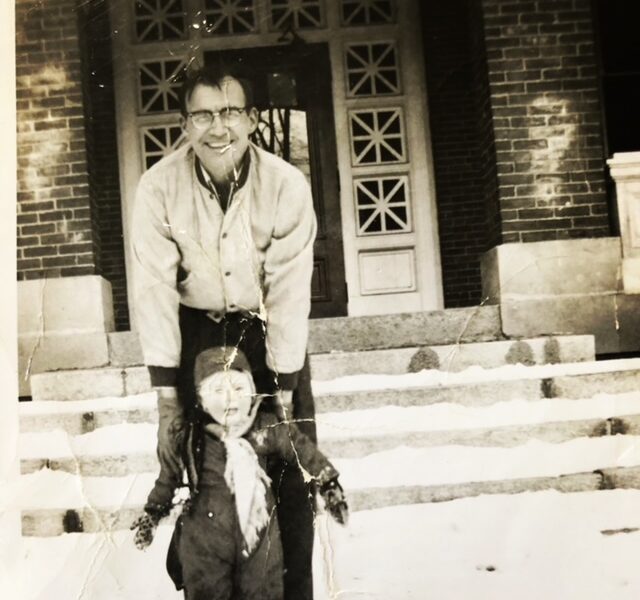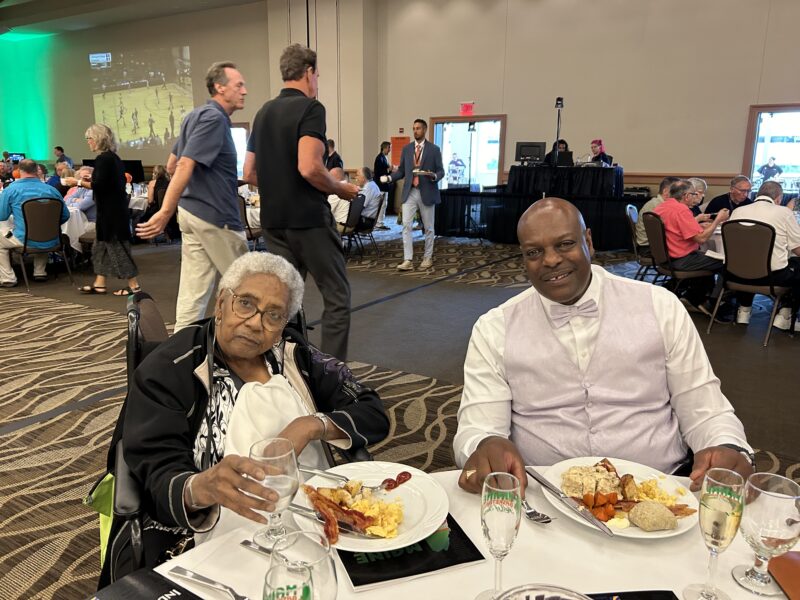Laura and I returned from vacation to some very sad news: George Mathieson ’68 passed away last week. Leaving wife Susan and three sons, George succumbed to what can only be called some very fast moving cancer. Feeling ill, he went to see his doctor on January 13 who examined him and then told him that he had about a month to live. George died on March 7.
As I told Susan, George’s life and untimely passing hits me very hard both personally and professionally. The guys who went to school with George at Hyde don’t need me to explain why, but it dawns on me that the vast majority of people reading this blog neither know George nor grasp his significance to Hyde in its halcyon days.
To try to explain, you might have heard of what I call the “Oh, So That’s You Mean” (OSTWYM) phenomenon. This came to me back in 1993 while watching a Hyde football practice. The coaches were trying to get the running backs to “hit the hole.” The backs weren’t having it. Exasperated, the coaches screamed (as only football coaches can do), “Don’t hesitate! Don’t dance around! Just take the damn ball and go! Don’t look to see if there’s an open hole….just go!” Whether due to fear or lack of understanding – and it was both – the kids just weren’t following the program. And then this quiet, seemingly unassuming freshman of average size – Chris Easterbrooks ’97 from Marblehead, Massachusetts – took the hand-off from the quarterback and made like a shot out of a cannon. The offense re-huddled and called Chris’ number again who responded with another cannon shot. The sequence then repeated itself a few times. If there was a hole, he hit it. If there wasn’t one, he made one. If a big offensive lineman was in his path, Chris just ran up and over his back. While the coaches salivated in ecstasy, you could see and feel all the kids going, “Oh……So That’s What You Mean!”
I have since seen the OSTWYM phenomenon play itself out in the classroom (e.g., Many of our Asian students have inspired this reaction within our academic program), on the stage, on the athletic field, in the jobs program, and in the dorms. Regardless of the endeavor, until the kids see one of their own do what you’re talking about, you’re just starring in your very own silent movie with your students, players, actors, etc. fast asleep in the theatre. Nothing happens until a kid steps up and takes his or her best shot. (That’s just one reason why I have always said that the real value of Brother’s Keeper is to the “keeper” and not to the “kept.”)
To get back to George, suffice it to say that if Hyde ever created our own OSTWYM Hall of Fame, George would go in on the first ballot. Whereas the Hyde of today enrolls over 2000 students in 10 public or private schools or affiliates, George was among the 55 boys who walked into the Mansion on that very first September opening day in 1966. Touting a “Challenge to the Underachiever,” Hyde was long on progressive ideas and short on an actual curriculum or program. The program would be shaped by the founder, the faculty, and the kids. George played an indispensible role with the latter.
There is no question that the Hyde of today would be a very different place had George and a few other guys in the early years not made the courageous decision to truly give this “Hyde Stuff” – e.g., the 5 Words, Brother’s Keeper (before it was even called that), character development, effort over ability, frank honesty with peers and faculty, etc. – an honest try. They had to risk popularity with their peers in order to do so. It was all about Courage – one of Hyde’s words – and George led the way.
When the faculty instituted The Hyde Award in 1968, it was clear to all that the first recipient would set the tone for the future. Not only was George the right choice, he remained throughout his life an exemplar of what that award and Hyde itself is all about. While the school stopped bestowing the award in the early 80s, it played an important role during Hyde’s first decade and if anyone served as its standard bearer, it was George. George’s later professional commitment and success as a senior development director at Massachusetts hospitals and for Volunteers of America demonstrated that whether at Hyde or at home, George was the same person.
On a personal level, George was a role model to me as young teenager. I performed very poorly on both academic and disciplinary fronts as a junior high student. In fact, my parents sent me away to a junior boarding school in hopes of straightening me out. This occurred during the time that George was enrolled at Hyde. His story prior to Hyde and his performance during and after graduating blazed a trail for me and so many other kids at Hyde in the early days of the school. He was a leader who went his own way. I aspired to do the same but had neither the confidence nor the tools to pull it off. While my parents and teachers told me that better things could happen for me, I needed proof from guys like George before I could believe it. He was my OSTWYM example before I even understood what that meant. I stand eternally grateful.
With deep thoughts and prayers to Susan, sons, and family,
Onward, Malcolm Gauld


